Do you have a disconnect between the size of your database and the amount of business it generates?
Your database is a healthy size. Your acquisition campaigns are topping it up with new subscribers. Churn is low. But you’re not seeing an increase in gains. If that’s the case, then you are not alone.
In this post we’ll address one of the biggest root causes – lapsed customers – and share examples of how to re-engage them, win back their attention and make your database work harder for you.
How do you define lapsed customers?
Many customers you acquire will go on to buy regularly, engage with your brand and grow in Lifetime Value (LTV) just the way you’d hope. Others however do not follow this path and over time stop responding to your activities. These are your lapsed customers, also known as your inactive customers.
The exact definition of a lapsed customer will vary depending on your business, so here are 3 areas to consider when making your own definition:
1) What do you really want them to do?
As a business this is an easy question – you want them to make a purchase of some sort. As a marketer the question can be harder because you also want them to engage with a wider range of campaigns. So, you want customer loyalty, but here’s a tough question for you – is it better to have someone that buys regularly but rarely reads your messages or a serial clicker who never buys anything?
Of course, it’s rarely that clear cut but you have to be honest with yourself about what constitutes a success action. Try not to get distracted by vanity metrics and stay focused on the end goal.
2) What is the average need for your product?
The definition of ‘lapsed’ varies depending on what you are selling. Groceries have a very different purchase cycle to a washing machine, for example. For food businesses the lack of purchase for a few weeks in a row may push a customer into lapsed. Whereas for a washing machine retailer a lack of engagement with value-add communications over many months may signify a need to try and re-engage.
Customer lifestage may also play a part for businesses that offer services or subscriptions. Consider measuring the level of engagement within a given stage when looking at your customer data. For example, if you sell mobile phone contracts then you’d expect less engagement in the middle of the contract than towards the final renewal period. Anyone not meeting this modeled behavior can be said to be lapsed and will need your attention within your marketing strategies.
3) Do you experience seasonality?
Are there key moments in the year when you’d expect most customers to use your product – such as Valentine’s day for gifts, or beach-wear in the summer? If so, then you’ll want to take those into account when defining ‘lapsed’. Remember, looking at a lapsed or inactive customer is a snapshot in time so be careful about the picture you capture.
So why go to the effort to re-engage lapsed or inactive customers at all?
Customer acquisition cost, the amount of marketing budget it takes to win a single new customer, has grown to anything “from 5 to 25 times more than retaining a current one” (MarketingLand). For some there is a real danger that acquisition costs actually exceed the potential lifetime value of a customer. So it’s not only considerably more cost effective to re-engage an existing customer and foster customer loyalty with them, but you are also likely to have more useful data on them that can help you do just that. Win win!
Now, there may still be situations where you do want to deactivate those contacts and wait for the day when they resubscribe or revisit your website naturally. Baby-related products are a great example of this as only a percentage of people might go on to need these products again in the future so you should make full use of the time they are in the market. Use your own judgement.
Now we’ve talked about who these lapsed customers are, let’s move onto some of the approaches you can use to re-engage customers.
How to re-engage lapsed customers
1) Show lapsed customers you value their business … and them
With acquisition costs growing it certainly makes sense to hang onto those customers you have already worked hard to obtain. Showing this audience that you value them, and their custom, is a simple way to re-engage inactive customers and encourage them back.
In this example, House of Fraser has offered a time-limited discount to incorporate urgency in their email marketing. They’re also reminding the recipient why they were first drawn to the brand with personalized imagery based on the product category they purchased previously.
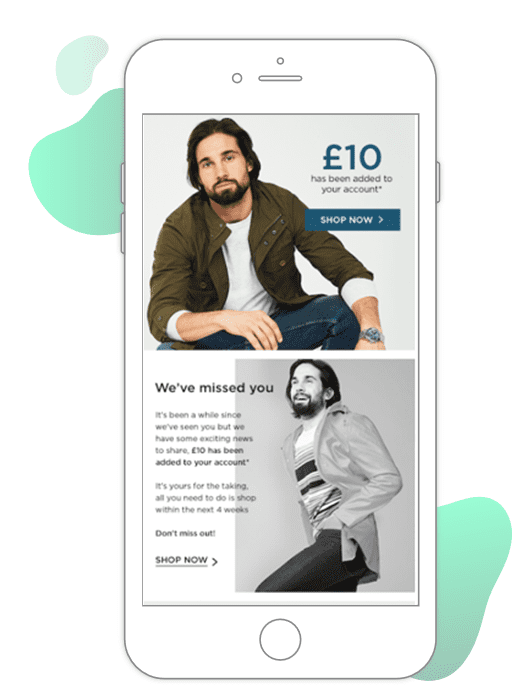
Be mindful of giving incentives to every contact though. Look out for those who are hooked on discounts and make sure you are achieving a margin with them that is sustainable.
2) Increase the personalization you use
Customers expect any company they’ve given permission to (important one that!) to tailor their offering and experience to them. With lapsed customers you really need to make it personal to them or fail to reconnect. If you aren’t tailoring it to each individual in your customer base, your competitors certainly will be.
Make what you know about these individuals, the marketing data you hold, work hard for you. This isn’t the time for a simple ‘Hi {Firstname}!’. Make use of relevant content such as personalized product recommendations based on the customer’s past browse and purchase data to remind your lapsed customers what they enjoyed with you in the past and introduce what they could enjoy in the future.
Kleertjes.com sends their shoppers branded newsletters, whereby any customer who buys a certain brand will receive an email with recommendations as soon as that brand’s new collection is released. This enables them to inspire their customers with products that are most likely to appeal to them based on past purchase and browse data.
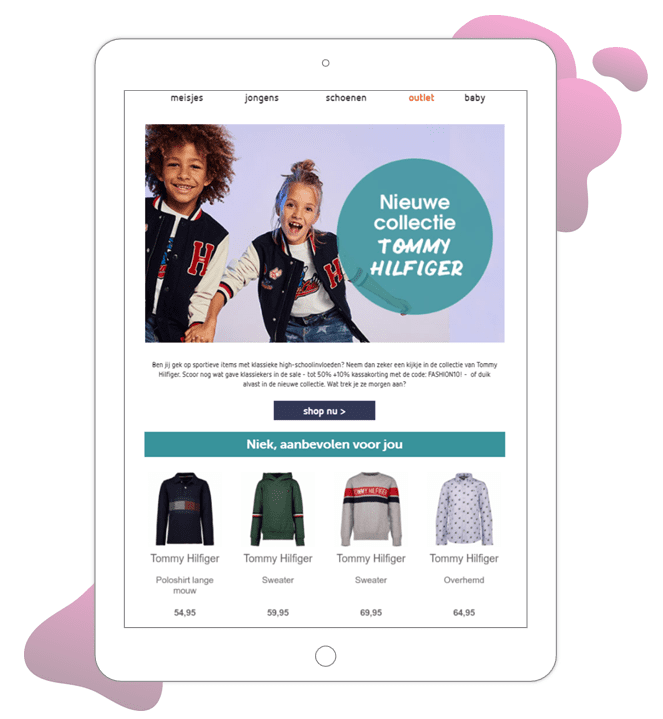
3) Ask for customer feedback to help you improve
If you don’t know the causes of lost engagement with your customers, then it’s going to be impossible to address them and turn things around. Don’t shy away from asking for their help. Good Club has introduced quick feedback requests, like this example, to help them gather insights into what they could be doing better.
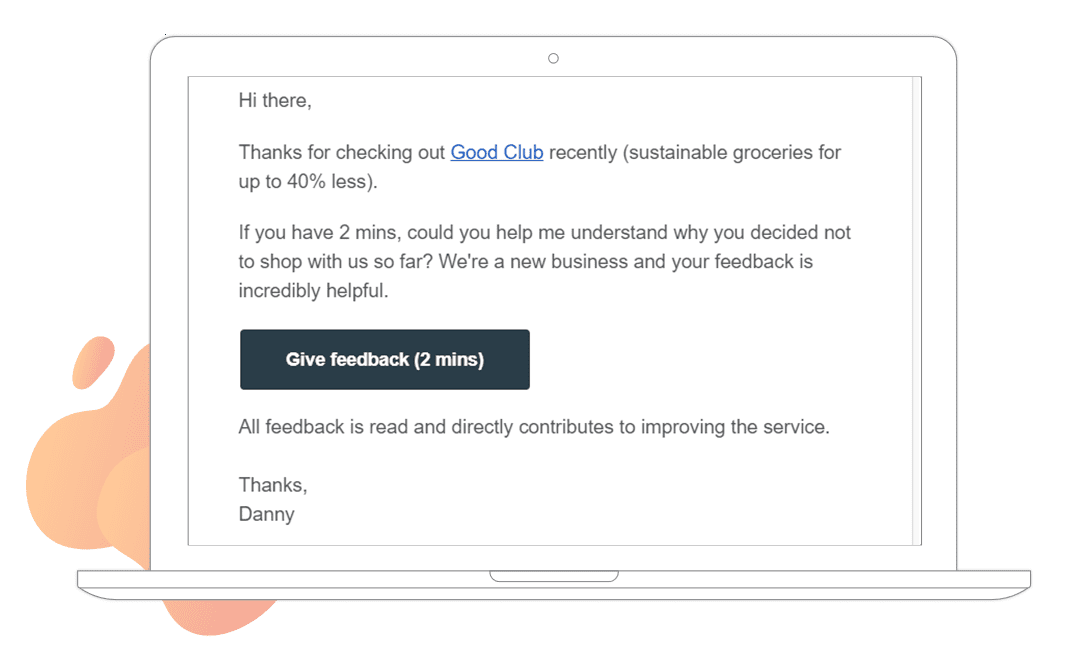
Given these customers are not engaging with your activities, expect quality over quantity when it comes to responses. You may also need to incentivize to get them to share with you. Remember – feedback is a gift!
4) Get triggering those reminders
Customers who aren’t naturally coming back to purchase from you again will need extra prompts via email marketing to do so. There are a number of customer moments to build triggers that will encourage re-engagement:
Back-in-stock
Back-in-stock messages are a great tactic to employ. This type of triggered email is based on shoppers’ browsing activity and can be a powerful way to re-engage the lapsed customer.
Replenishment
Out of sight is out of mind. Don’t let customers go too long without you and your product – and make it easy for them to buy any consumable items again. If you are already a subscription business, think about replenishment for your subsidiary products and using this to rekindle their love of your core offering too.
This example for Vision Direct keeps replenishment simple and provides the reassurance customers need at the moment.
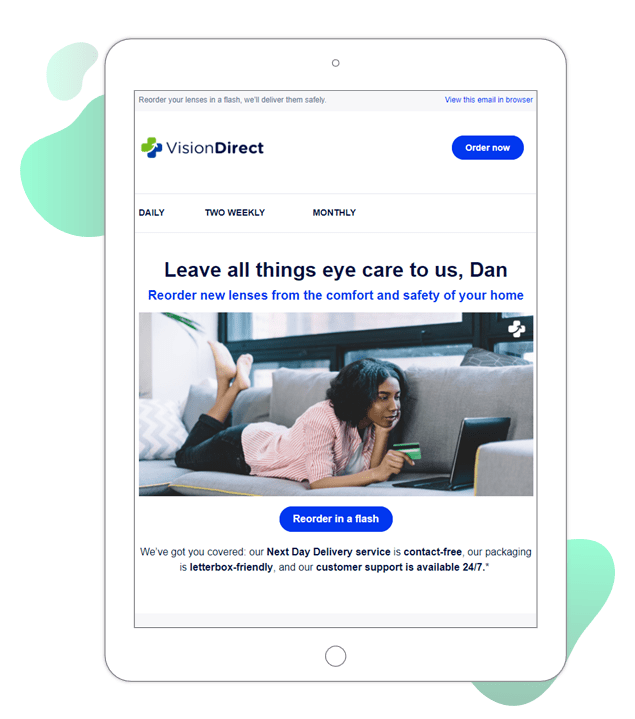
Seasonal event reminders
Don’t miss those recurring moments in your customers lives. It’s straight-forward to send out a bulk campaign when Valentine’s Day is around the corner, but to capture their attention for individual birthdays and anniversaries you’re going to have to look at automation. You can start simple with a birthday offer for both every lapsed customer and active customer, but think outside the box too, and look for peaks in basket value or a switch in product interest that could indicate a special event.
5) Recapture their attention with a change of pace
It’s very easy to slip into the habit of ignoring something that is regular and familiar. If you want to recapture someone’s attention, then think about changing the customer experience up.
Resends to non-openers are a simple technique to increase the number of views without too much additional effort. Employing this tactic effectively can reward you with +50% open rates for a campaign.
Short periods of increased frequency, like a series of messages linked to a competitive, time-limited offer, can help cut through the norm of your email program and reconnect lapsed customers. It’s not just for Christmas!
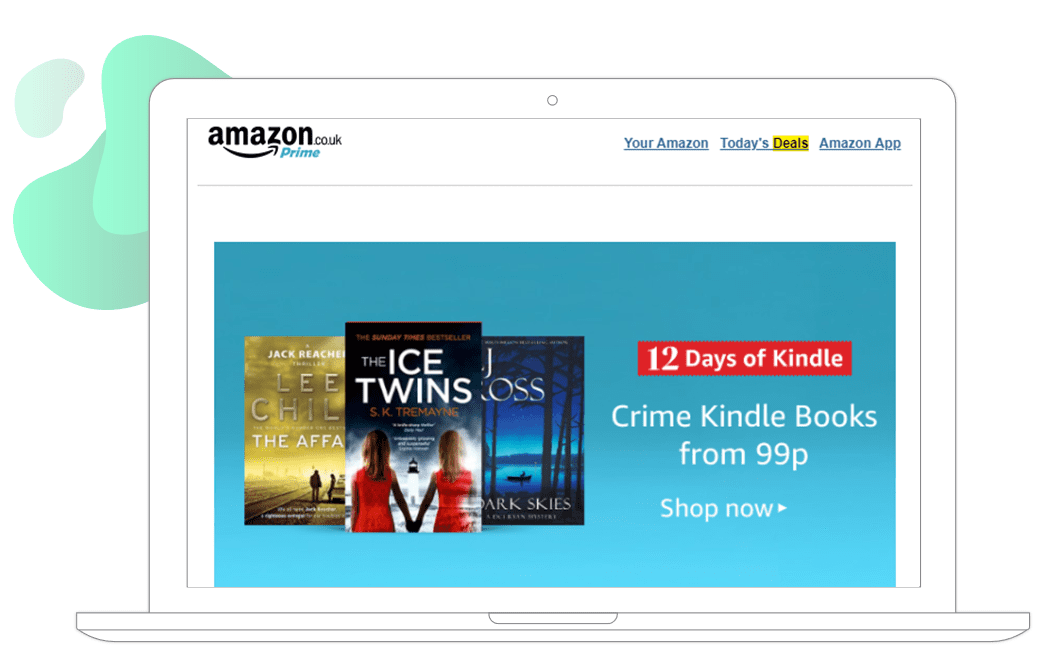
Just watch out for volume peaks that might impact your deliverability. Carrying out this activity little and often as an automated campaign can help flatten out any spikes from this increased frequency.
Don’t leave it too long before reactivating customers
Finally, don’t leave it too long before reactivating customers. The further away from their last engagement you get, the less likely they’ll be to engage again. So, avoid waiting and running your reactivation campaign every 6 months, and instead make it part of the marketing automations you have working hard for you every day.
Discover how 17 eCommerce brands personalize the customer journey to reconvert existing customers in the Ultimate Ecommerce CRO Lookbook [returning customers edition].




![Download The Ultimate Ecommerce CRO Lookbook [returning visitors edition]](https://no-cache.hubspot.com/cta/default/483487/a0107921-c20d-4537-8e7b-2201410a6b76.png)



